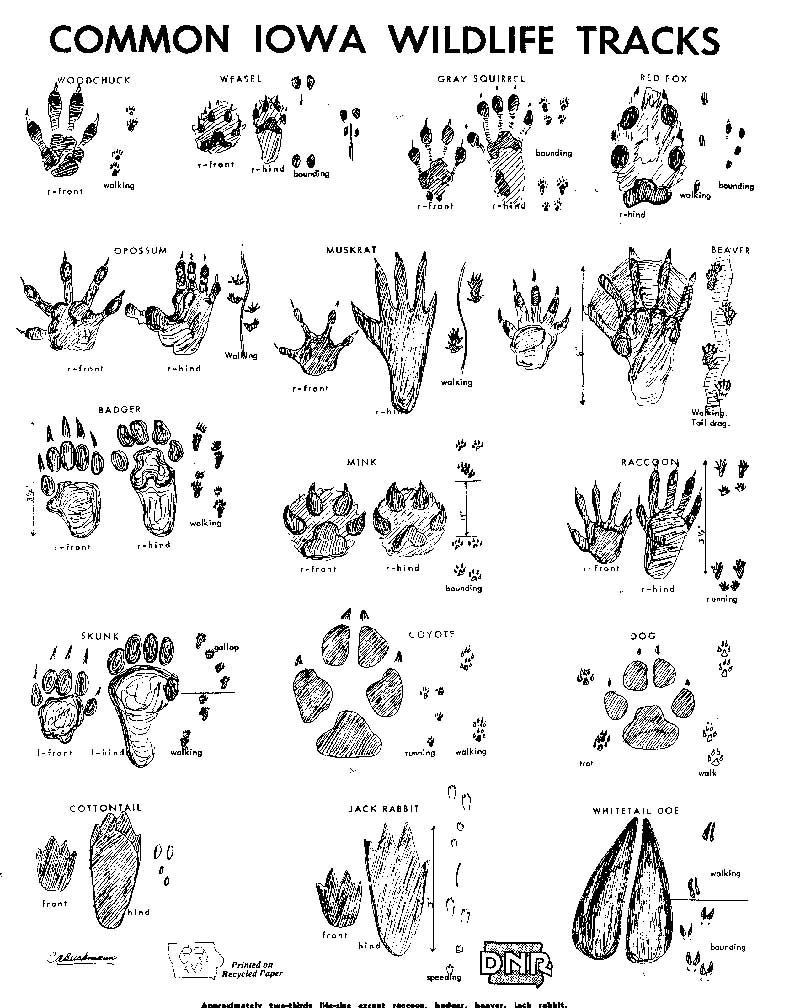When you’re out enjoying Iowa’s great outdoors, how often do you think to look down? One of the best ways for a burgeoning photographer, hunter or wildlife enthusiast to figure out what types of animals are around is to look for tracks.
While not every track is vividly clear or an absolute ringer for a particular species description, knowing basic identification can help you steer clear of some animals and track down others for a closer look. DNR field technician Paul Frese helped provide some basic identifying information below, and there’s also an animal tracks guide (scroll down) that covers some common tracks!
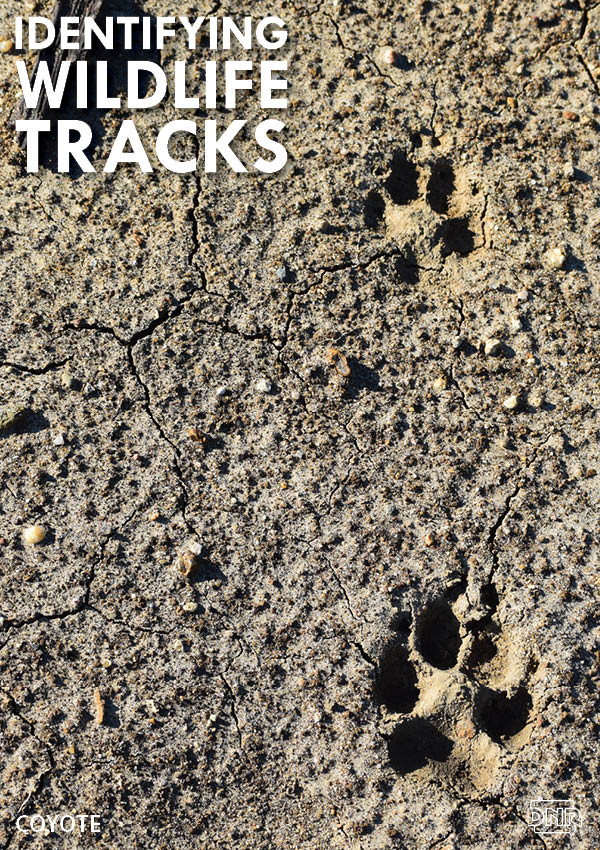
Raccoon Raccoons’ front feet are hand-like, and thus make tracks that look like miniature human handprints with five claw divots above. These tracks are roughly the length and width of a paper clip, and will alternate with hind footprints, which are triangular and approximately symmetrical around the middle toe of five. Look near water, as raccoons sometimes like to wash their food before eating. Tracks may be accompanied by poop, called scat, which will be approximately the diameter of a finger and likely contain visible seeds from eating fruit in summer.
Deer Deer tracks are very distinctive because deer are the only common, naturally breeding hoofed animals in Iowa. Because their hooves are cloven, a complete single track will consist of four indentations: two large crescents and two less distinct rounded marks behind. Hind tracks may be slightly smaller, but all whitetail deer tracks have this shape. If the deer was moving fast, the smaller rounded marks may be absent. Together, the crescent halves look roughly like a heart, with the bottom points indicating the direction of travel. Tracks are roughly the size of a walnut. If you find a lot of these tracks ambling around in no particular direction, look for large flattened areas of grass and piles of small, pellet-like scat. If you see these together, it’s likely where the deer bedded down for a night.
Bobcat Although bobcats do live in Iowa (primarily in southern parts of the state), they are reclusive and not particularly common. Their tracks are approximately the size of a 50-cent piece and consist of a main paw pad print surrounded by four toe prints, appearing very similar in shape to those of a domestic cat or domestic dog. No claw marks appear with bobcat tracks because their claws are retractable. In a clear and complete track, look at the bottom edge of the indent from the center pad of the foot: if it has three rounded portions extending outward, it was made by a feline.
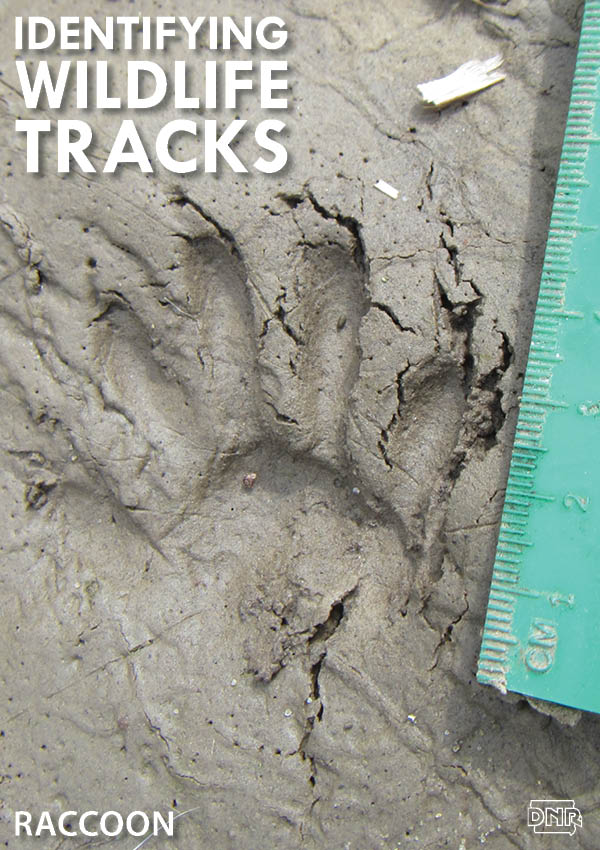
Fox Fox tracks can appear similar to domestic cat tracks, with a main pad and four toes. Because foxes are canines and their claws are not retractable, claw marks may appear in the tracks. Generally the claw marks of a fox are less pronounced than those of a coyote or domestic dog. As a rule, if the two middle toes line up evenly and the back edge of the main pad curves inward, the track was made by a canine. However, a fox’s hind feet have three outward curves on the back of the main pad like a cat. If you see alternating quarter-sized canine- and feline-like footprints, especially with fur marks included, you’re probably looking at fox tracks.
Opossum Two species of opossums live in Iowa, and their tracks are easily identifiable by the large marks from the opposable thumbs on their hind feet. Their front feet make tracks like a raccoon’s – a little handprint with claw marks above – but their hind tracks look like a handprint with a particularly muscular thumb pointing down and away from the fingers. Frese says even opossum front prints can distinguish it from a raccoon, because opossum prints look more lopsided and human than raccoon prints, which are perfectly spread. Note that prints may overlap, so follow them for a while until you find a clear one to use for identification.
Turtle While many turtles swim, many may also - or may only - walk on land. Technically speaking, land-dwelling turtles may also be called tortoises. Look for small clusters of long, sweeping claw marks in mud or sandy soil. Size can vary greatly by species and age, so an ornate box turtle track may be one inch long while a mature snapping turtle’s may stretch for several. If you find a live turtle, look at its feet to know if it lives on land or in the water. If the toes have long claws and the feet look stumpy, the animal is a tortoise and lives on land. If the toes are webbed and the foot is paddle-like, it likely lives in a nearby body of water. Moving a wild animal is strictly ill advised in nearly every scenario, but especially in the case of turtles. Turtles, especially snappers, may bite and seriously injure you if you approach, touch or pick them up because they see you as a predator, and well-meaning but uninformed persons have drowned land-dwelling tortoises accidentally by throwing them into bodies of water. If you absolutely think an animal needs to be moved and won’t do it itself, call a conservation authority or animal control officer in your area to help.
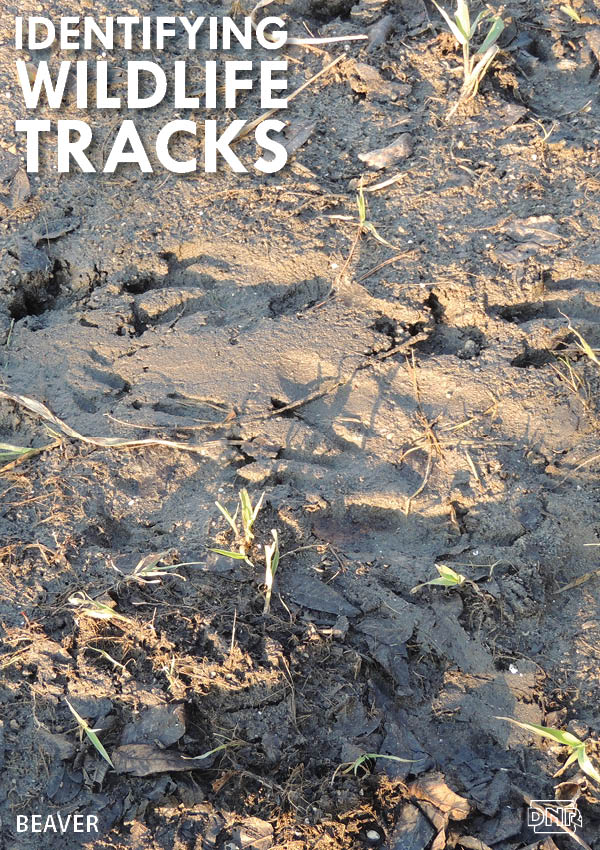
Beaver Beaver tracks can be low quality due to the muddy banks where beavers walk, but they are distinct from those of other mammals because beavers’ hind feet are webbed. Tracks from their front feet look like small handprints, but their hind feet make triangular prints with a large pad spreading into five webbed toes. Tracks may distort in mud from speed, water, and time, so look for accompanying large dragging tracks from the beaver’s tail, nearby downed trees, gnawed stumps or a beaver dam to be more sure about your identification.
Snake Although it’s near impossible to tell what species of snake made a track, you won’t mistake snake tracks for those of any other animal. If you find a series of s-shaped divots running through mud or sand, especially in an area without heavy local winds or water currents, it’s probably a mark from a snake. Nearly all Iowa species of snakes are legally protected from being killed, trapped, or otherwise collected, so it’s a good idea to leave the snake tracks you find alone.
Toad Toads have four toes on their front feet, which they hold facing inward, and five on their back feet, which face out. Their toes are not usually webbed, but tracks may appear muddled or smeared from hopping, overlapping footsteps and the soft soils they tend to travel on. Look for a smaller, splayed and inward facing set of prints surrounded by dragging marks.
Badger These tracks are most easily identified by the long claw marks on the tracks from the animal’s front paws. These prints are about 2.5 inches long, with approximately a third of that length being claw marks. Prints from the hind feet are smaller, with shorter claw marks. Badgers are territorial and can be aggressive, so avoid following this trail.
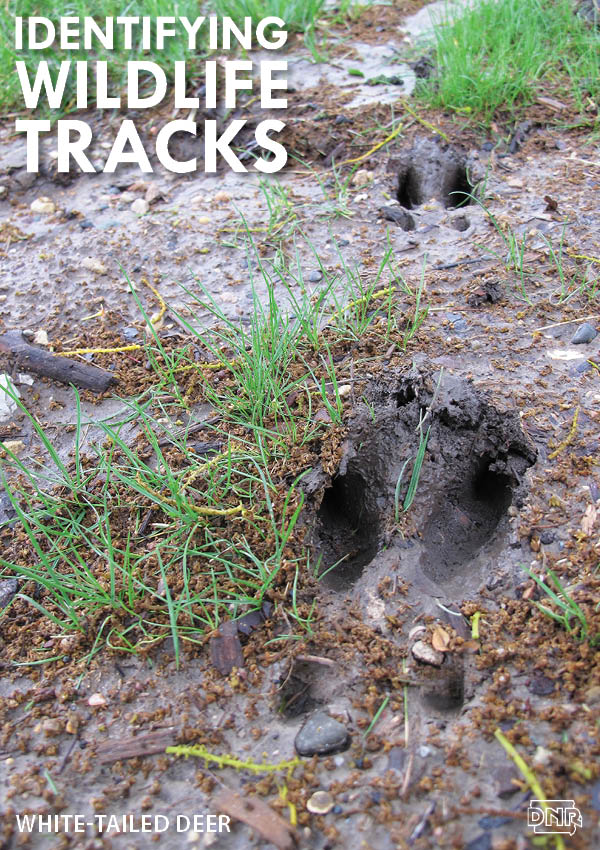 Slugs and Snails These tracks may occur on a variety of surfaces at various sizes and heights, but the fresh trail of a slug or snail is classically found covered in sticky mucus, similar to what human bodies produce for snot and phlegm. These mucus trails are usually white or clear, and can be found on everything from sidewalks to garden plants and trees. Since slugs are relatively slow-moving, the animal is probably nearby, and you can take a close look at it. Slugs have interesting protrusions extending out of their heads, which some people mistake for antenna. Antennas are characteristic of other invertebrates like insects, but slugs are mollusks and the protrusions are its eye stalks.
Slugs and Snails These tracks may occur on a variety of surfaces at various sizes and heights, but the fresh trail of a slug or snail is classically found covered in sticky mucus, similar to what human bodies produce for snot and phlegm. These mucus trails are usually white or clear, and can be found on everything from sidewalks to garden plants and trees. Since slugs are relatively slow-moving, the animal is probably nearby, and you can take a close look at it. Slugs have interesting protrusions extending out of their heads, which some people mistake for antenna. Antennas are characteristic of other invertebrates like insects, but slugs are mollusks and the protrusions are its eye stalks.
Ducks and Other Waterfowl Waterfowl tracks are easy to spot because of the birds’ webbed feet. Look for three webbed toes, potentially with claw marks above and another at the back, where the bird’s spur is. Wading birds or shorebirds will probably also have tracks nearby, which will show now webbing and skinnier, proportionally longer toes.
Rabbit Rabbits are notably petite and fast, so much so that pads may not be easily discernible in each track. The rabbit’s naturally fluffy feet also make the pads had to see. Still, paired long oval tracks and small round tracks usually mean a rabbit has been through. You can look for small, round pellets of scat to help identify muddled tracks.
Coyote Coyote tracks are very similar to those of a large domestic dog, with claw marks and four large toes surrounding a primary paw pad that curves inward on the back edge. The total track should be about the size of a large walnut. To tell dog and coyote prints apart, look at how distinct the claw marks are, and the overall shape of the footprints. Coyote claws don’t dig into the dirt as much, and their prints are much more oblong than those of a domestic dog. You can also examine the proximity of the prints to urban housing, and the consistency of direction. If the trail ambles around, it’s more likely to be a domestic dog.
